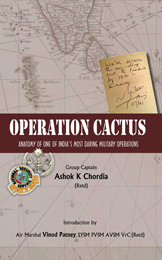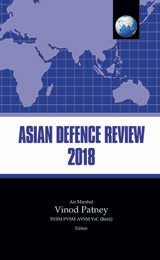Subjects
Recent View(s)
Military Weapons and Environment
UC Jha
Armed conflicts have become more complicated, with the emphasis shifting towards new weapons such as drones, cybercrime and autonomous weapons. In July 2017, the UN General Assembly adopted the Treaty on the Prohibition of Nuclear Weapons. This treaty prohibits a full range of nuclear-weapon-related activities, such as undertaking to develop, test, produce, manufacture, acquire, possess or stockpile nuclear weapons or other nuclear explosive devices, as well as the use or threat of use of these weapons.
The ongoing conflicts have shown that the consequences of the use of explosive weapons are not limited to death, physical injury and disability, but also include long-term impacts on mental well-being. The use of improvised weapons by States and non-State actors is an area of concern for the environment.
Every State must, therefore, ensure that weapons used by their armed forces are explicitly adjudged under International Humanitarian Law (IHL) and Human Rights Law. While reviewing a new weapon, the States must adopt multilateral approaches, drawing upon relevant legal, health, environmental and military expertise.
This book describes the environmental effects of eight weapons and explosive remnants of war that have caused extensive environmental harm in the recent past. It also makes specific recommendations addressed to the international community and the States for protecting the natural environment from the impact of weapons of war. This book will contribute towards a better understanding of the environmental harm caused by military weapons.
Wing Commander (Dr) U C Jha is an independent researcher. His current research interests include military law, international humanitarian law (IHL) and human rights law. He holds a Ph D degree in Law and Governance from Jawaharlal Nehru University, New Delhi. Dr Jha was invited by the United Nations High Commissioner for Human Rights at Geneva, where he made a presentation during a thematic session on the independence, impartiality and competence of the judiciary, including military courts. His recent publications include Pakistan Army: Legislature, Judge and Executioner (2016), Robotic Weapons: Lethal Autonomous Weapon Systems-Legal, Ethical, and Moral Challenges (2016), and Drone Wars: Ethical, Legal and Strategic Implications (2014).
Contents
Preface
Abbreviations
1. Introduction
2. Weapons of Mass Destruction
2 A. Nuclear Weapons
2 B. Biological Weapons
2 C. Chemical Weapons
2 D. Legal Control: Chemical and Biological Weapons
3. Conventional Weapons
3 A. Depleted Uranium Weapons
3 B. High Explosive Weapons (HEW)
3 C. Incendiary Weapons
4. Prohibited Conventional Weapons
4 A. Anti-personnel Landmines
4 B. Cluster Munitions
4 C. Explosive Remnants of War
5. Weapons and the Law
6. Conclusion and Recommendations
Bibliography


 Political Science
Political Science


